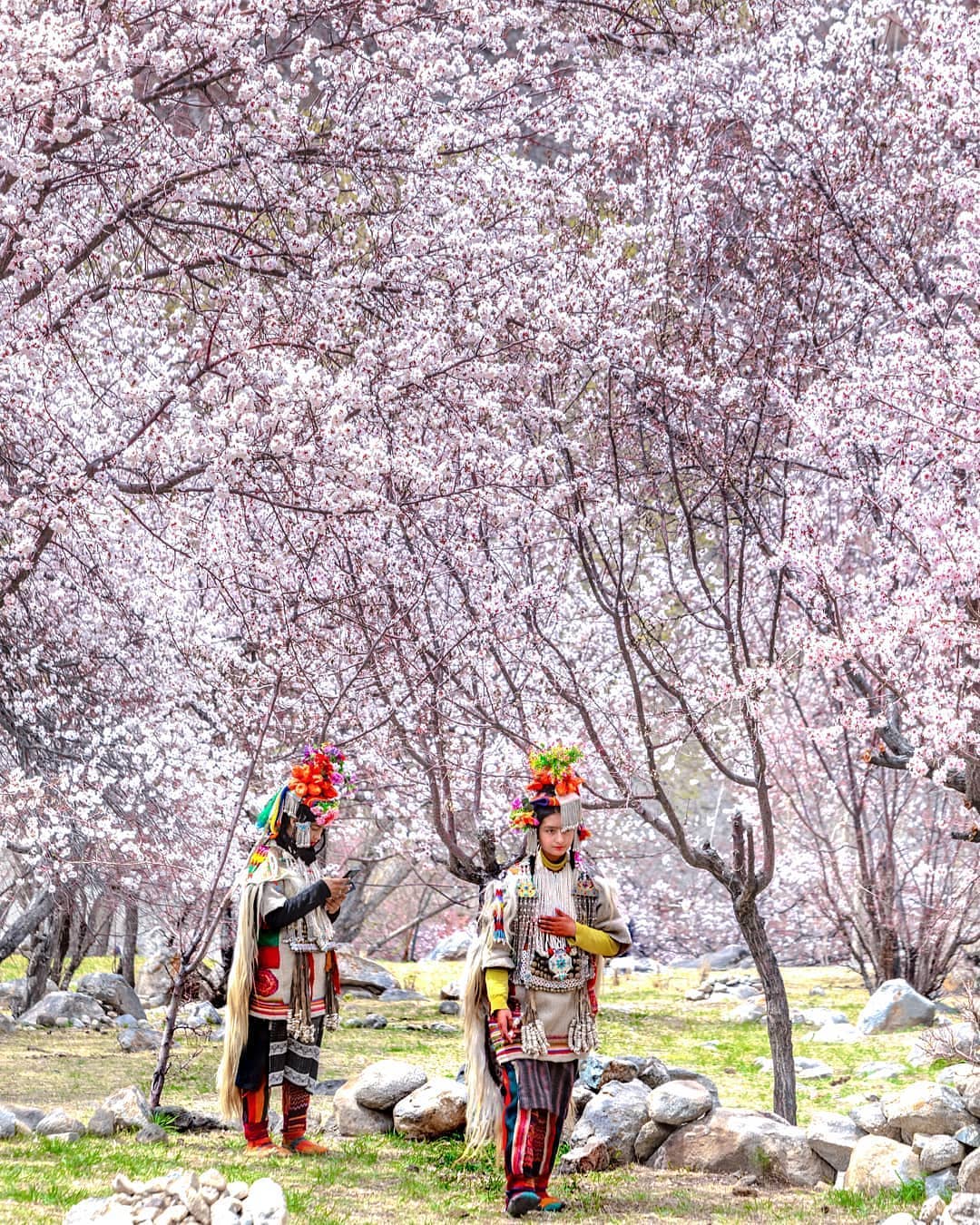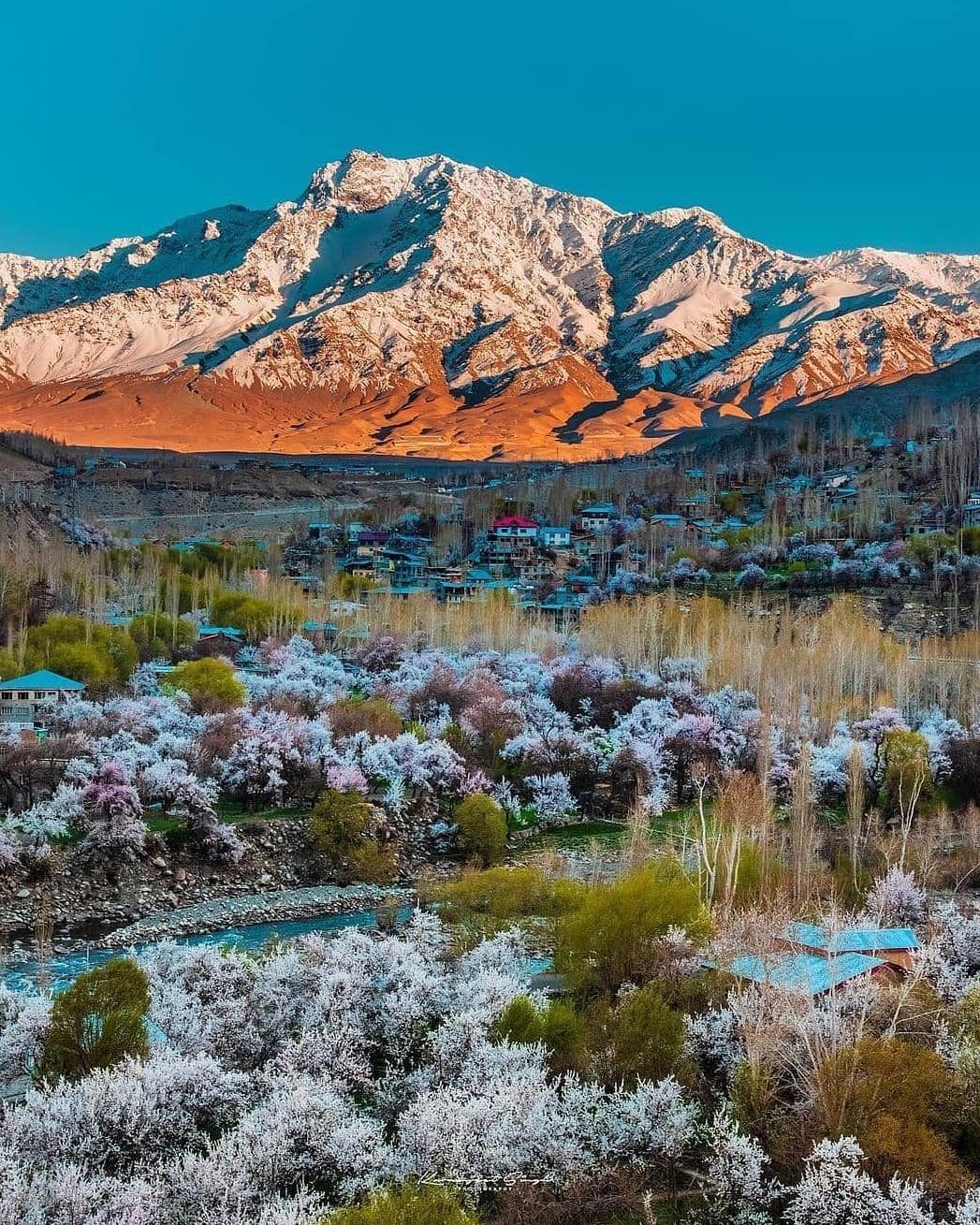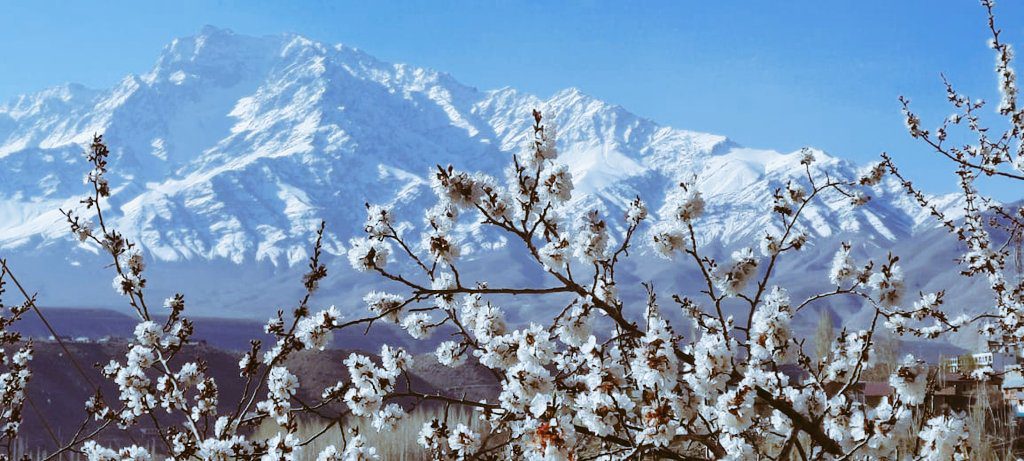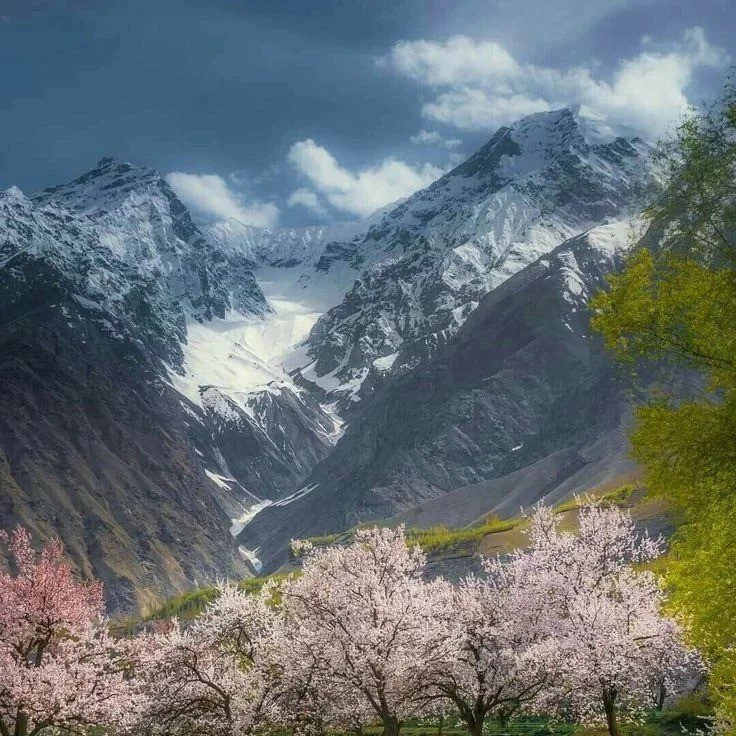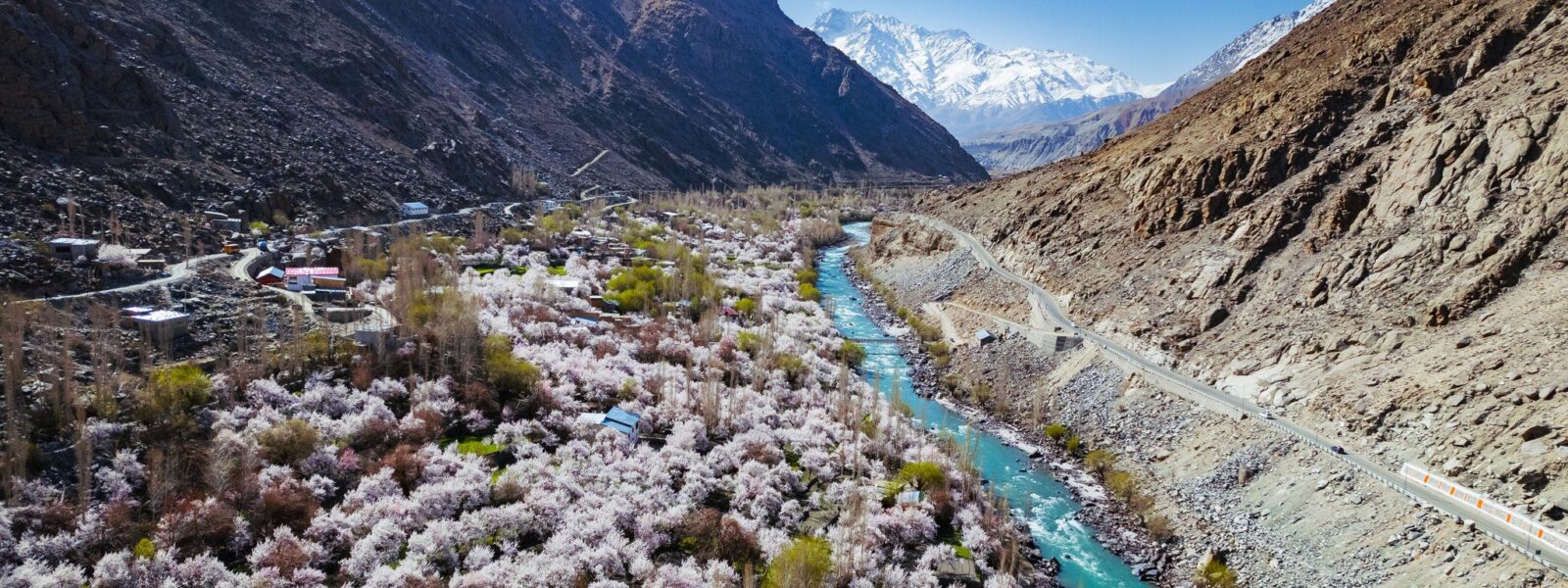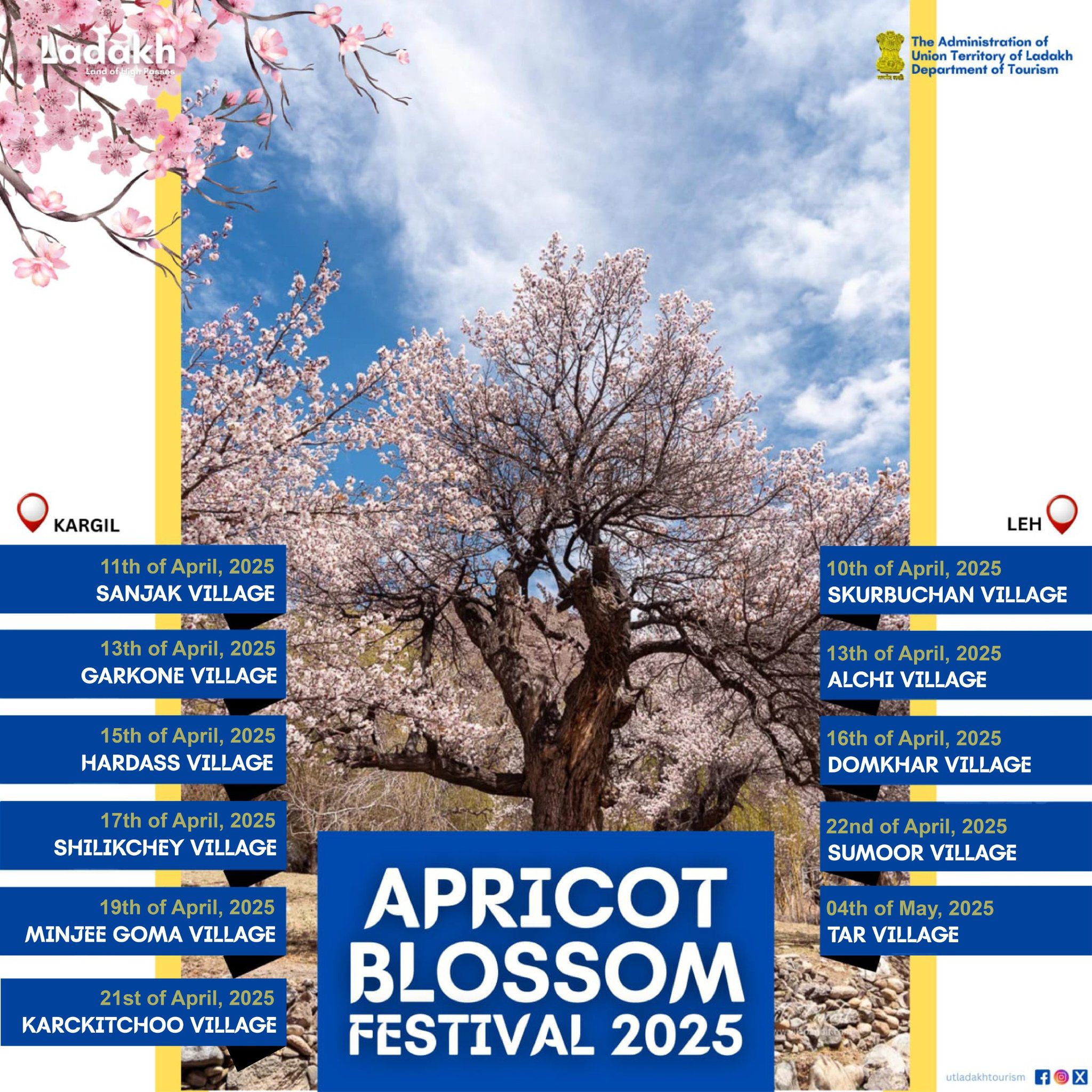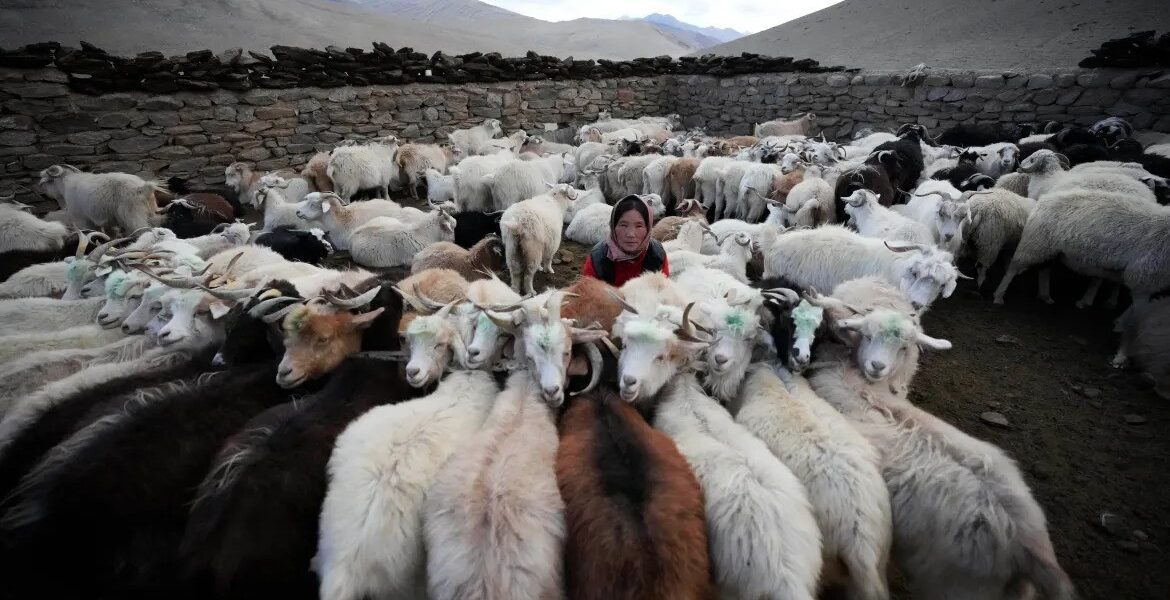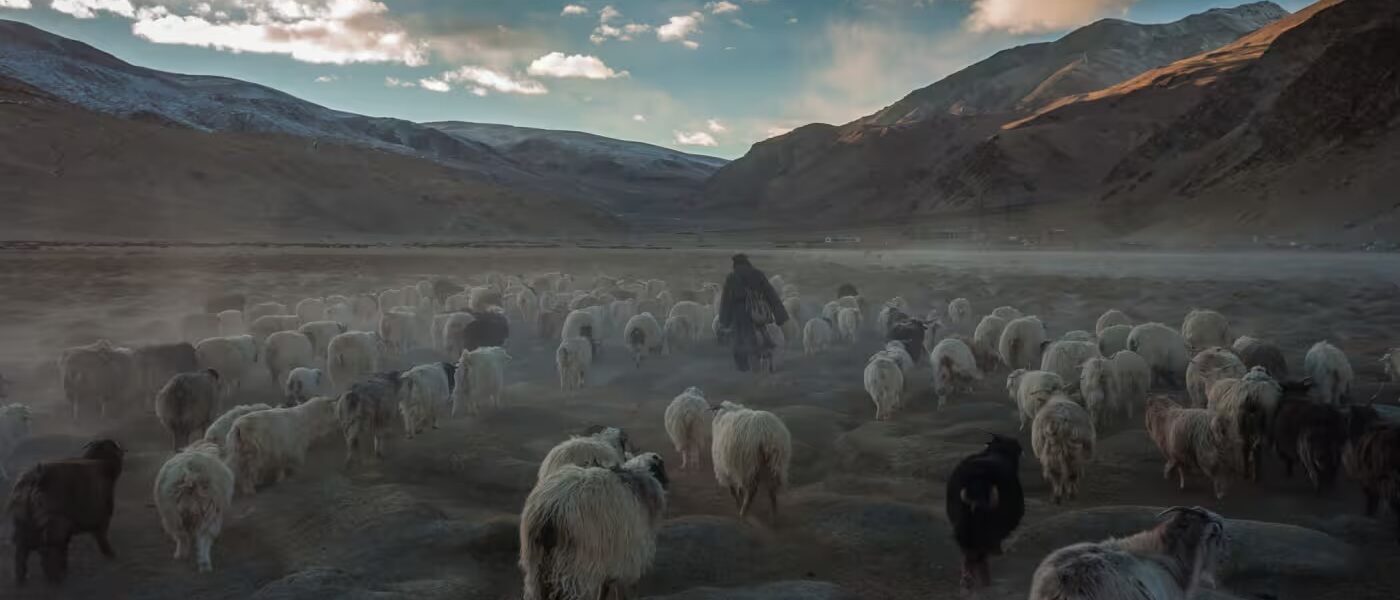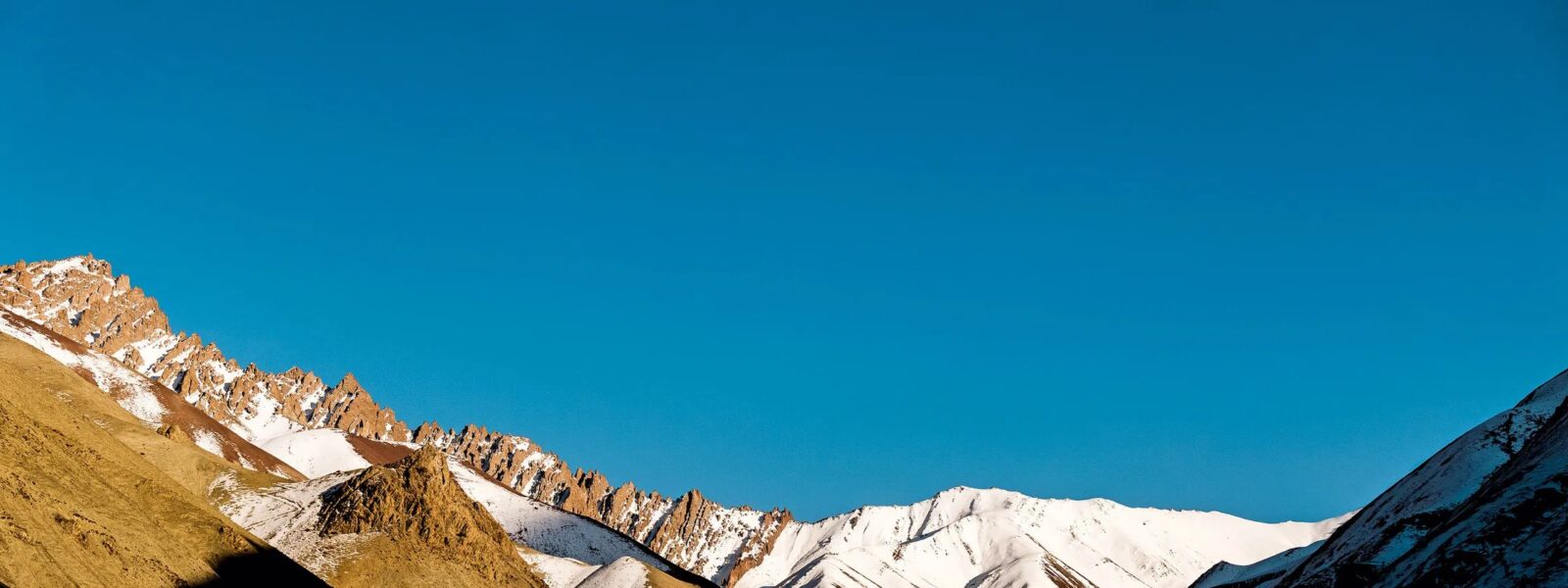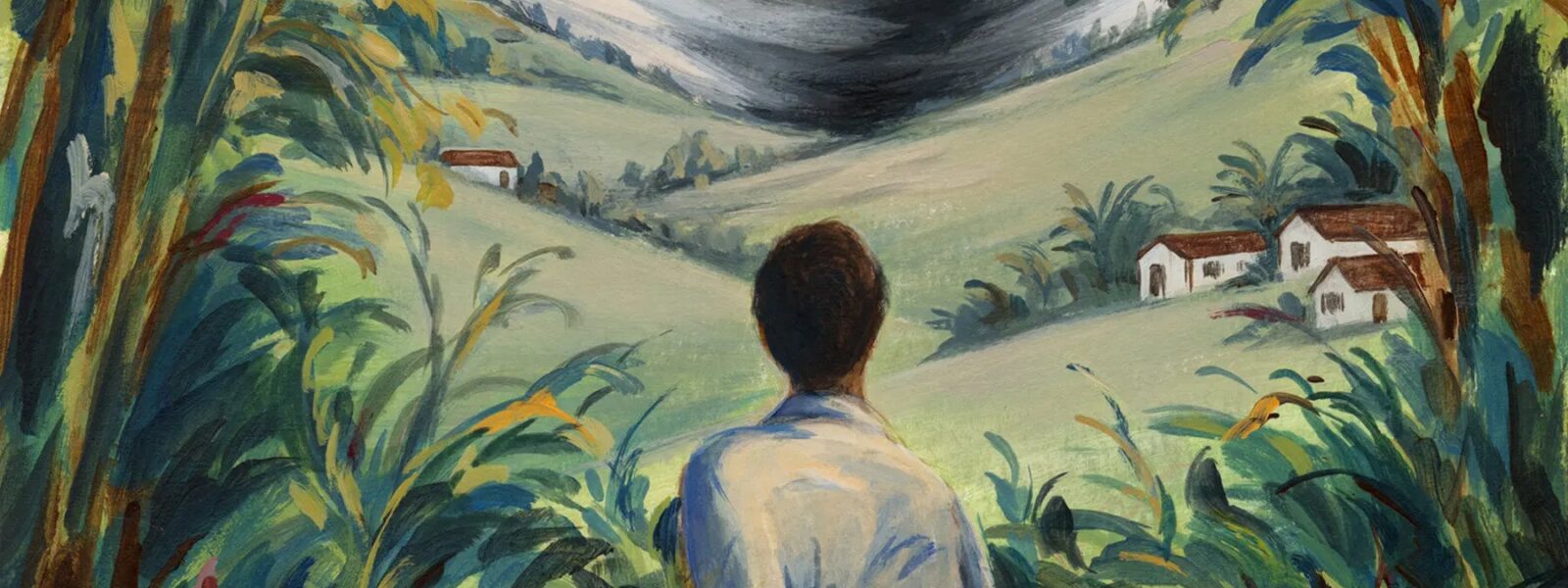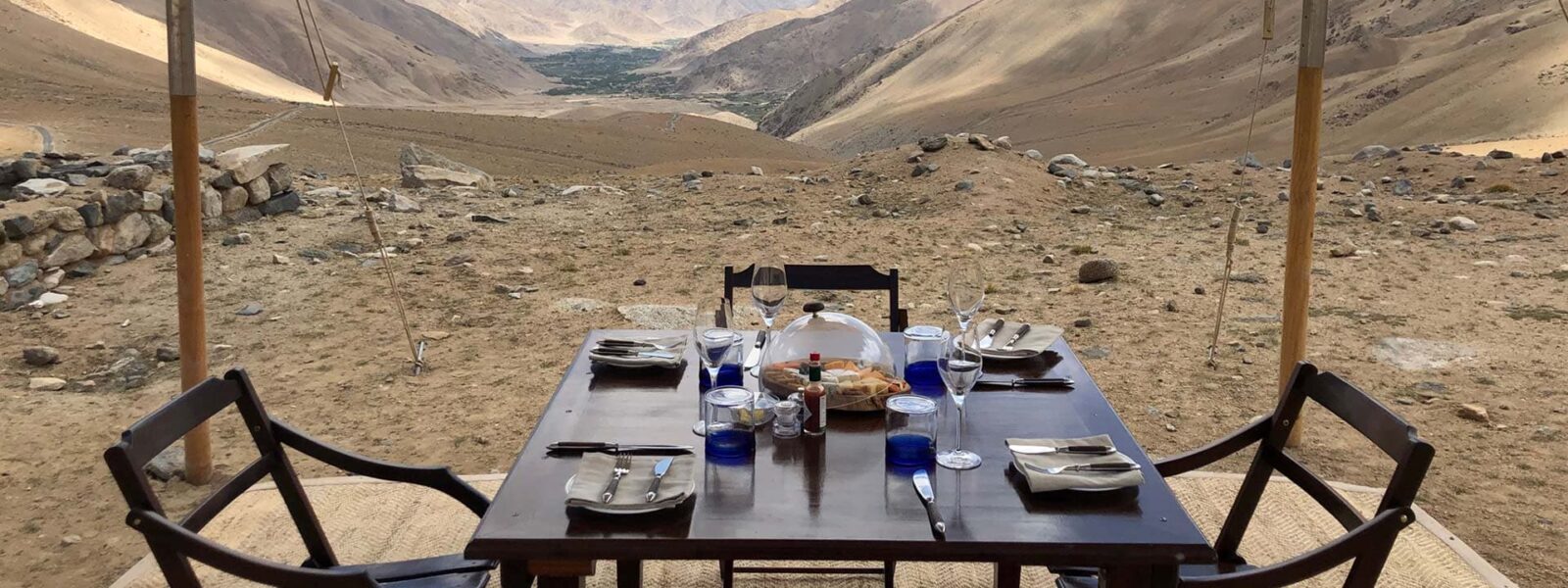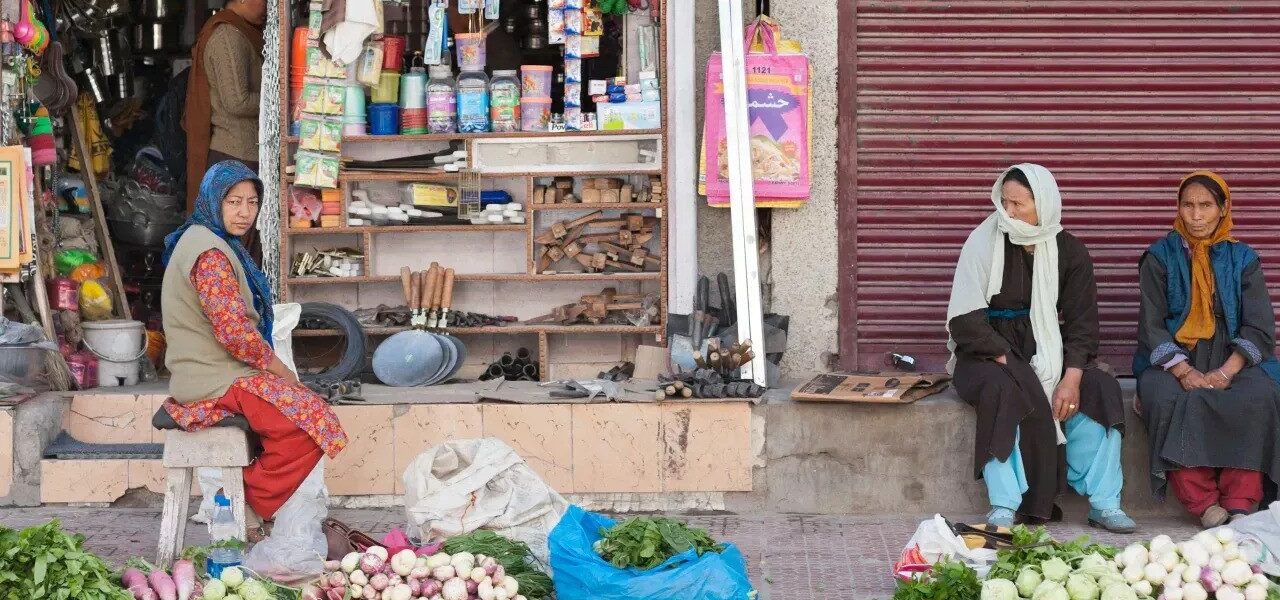Table of Contents
- Introduction
- Dates and Locations
- Getting There
- Highlights of the Festival
- Cultural Significance
- Accommodation
- Explore Nearby Attractions
- Practical Tips
- Customer Testimonial
- Q&A
Welcome to the Apricot Blossom Festival in Ladakh
Ladakh, often referred to as the “Land of High Passes,” transforms into a paradise each spring with the Apricot Blossom Festival. This vibrant event celebrates the region’s natural beauty, rich cultural heritage, and the blossoming apricot trees that paint the landscape in delicate hues of pink and white. Whether you’re a nature lover, a cultural enthusiast, or an adventure seeker, the Apricot Blossom Festival in Ladakh promises an unforgettable experience. The festival also plays a vital role in promoting eco-tourism and sustainable travel practices in the region.
The apricot, locally known as “Chuli,” holds a special place in Ladakhi culture. It is not just a fruit but a symbol of resilience and sustenance in Ladakh’s challenging environment. The festival brings this connection to life through a blend of cultural events, culinary delights, and immersive experiences that captivate both locals and visitors alike.
Dates and Locations
- 2025 Festival Dates: 2nd week April to 1st week May

The festival takes place across various apricot-growing regions in Ladakh, including:
- April 10, 2025 – Skurbuchan Village
- April 11, 2025 – Sanjak Village
- April 13, 2025 – Garkone Village
- April 13, 2025 – Alchi Village
- April 15, 2025 – Hardass Village
- April 16, 2025 – Domkhar Village
- April 17, 2025 – Shilikchey Village
- April 19, 2025 – Minjee Village
- April 21, 2025 – Karckitchoo Village
- April 22, 2025 – Sumoor Village
- May 4, 2025 – Tar Village
Each of these locations offers a unique perspective on the cultural and natural diversity of Ladakh. Visitors can experience the festival’s vibrant energy while exploring the picturesque landscapes and traditional Ladakhi villages.

Getting There
The primary gateway to Ladakh is Leh, the capital city, accessible via flights from major Indian cities like Delhi, Mumbai, and Srinagar. From Leh, you can hire a taxi or join a guided tour to reach the apricot-growing villages. Ensure you acclimatize in Leh for at least 1-2 days to adjust to the high altitude.
For adventure enthusiasts, there are overland routes available via Manali-Leh and Srinagar-Leh highways, which offer stunning vistas but require meticulous planning. Public transport options, including buses and shared taxis, are also available for budget travelers.
Highlights of the Festival
Blossoming Apricot Trees
Take leisurely walks through orchards adorned with blooming apricot trees. Capture stunning photographs of the pink and white blossoms set against the majestic snow-capped Himalayas. These blossoms signify the arrival of spring and symbolize renewal and hope.
Cultural Performances
Enjoy traditional music, dance performances, and theatrical presentations that showcase Ladakhi heritage and age-old rituals. Artists from various regions come together to perform, creating a vibrant cultural tapestry that mesmerizes audiences.
Apricot-Based Delicacies
Savor apricot pies, jams, juices, and traditional desserts crafted from the sweet Raktsey Karpo apricot variety unique to Ladakh. These culinary offerings provide a taste of Ladakh’s rich gastronomic culture and highlight the versatility of apricots in local cuisine.
Handicrafts and Artisanal Products
Browse stalls featuring handmade apricot wood items, embroidered textiles, and other artisanal products. These make for perfect souvenirs to take home while supporting local artisans and promoting sustainable livelihoods.
Apricot Harvesting Activities
Participate in harvesting activities and learn about traditional farming techniques from local farmers. These activities provide a hands-on understanding of Ladakh’s agrarian lifestyle and the significance of apricot cultivation in the region.

Cultural Significance
The Apricot Blossom Festival is deeply rooted in Ladakh’s cultural history. Traditionally, apricots have been an indispensable part of Ladakhi life, serving as a source of nutrition and a symbol of prosperity. The festival not only celebrates the apricot harvest but also fosters community bonding and cultural preservation.
The event has evolved into a platform for showcasing Ladakh’s intangible heritage, including folk dances, traditional music, and local craftsmanship. It also serves as a medium for cultural exchange, drawing visitors from around the world to experience the warmth and hospitality of Ladakhi communities.
Accommodation
Plan your stay in advance, especially during the festival season. Consider eco-friendly options like the Lchang Nang Retreat in Nubra Valley, which emphasizes sustainability and offers proximity to festival venues. Homestays in apricot-growing villages provide an authentic experience and an opportunity to connect with local families.
For those seeking luxury, there are several boutique hotels and resorts in Leh offering modern amenities and breathtaking views. Budget travelers can opt for guesthouses or campsites that offer basic facilities and a chance to immerse themselves in Ladakh’s pristine environment.

Explore Nearby Attractions
- Dah Hanu: Known for its unique Aryan culture and picturesque landscapes.
- Sanjak: A serene village offering insights into Ladakhi rural life.
- Chiktan: Famous for its historical fort and traditional architecture.
- Batalik: A region rich in history and surrounded by stunning mountain views.
These nearby attractions complement the festival experience, allowing visitors to delve deeper into Ladakh’s cultural and natural richness while staying close to the festival venues.
Practical Tips
- Dress in layers to adapt to temperature fluctuations.
- Stay hydrated and use sunscreen, sunglasses, and a hat to protect against high-altitude sun exposure.
- Respect local customs and seek permission before taking photographs of people or religious sites.
- Support local artisans by purchasing handmade products.
- Carry essential medications and a basic first-aid kit for emergencies.
Customer Testimonial
“Experiencing the Apricot Blossom Festival was like stepping into a dream. The delicate pink blossoms, the soulful cultural performances, and the warm hospitality of Ladakhis made it an unforgettable journey.” – Sarah Thompson, Teacher, United Kingdom

Frequently Asked Questions
What is the Apricot Blossom Festival?
The Apricot Blossom Festival is an annual event celebrating the blooming of apricot trees in Ladakh, coupled with cultural performances, exhibitions, and local cuisine.
Where is the festival held?
The festival is held in various apricot-growing regions of Ladakh, such as Garkone, Darchiks, and Yuldar.
Can I buy apricots during the festival?
Yes, visitors can purchase fresh apricots and apricot-based products like jams and jellies during the festival.
Apricot Blossom Festival 2025 in Ladakh
Apricot Blossom Festival 2025 in Ladakh | The journey through Ladakh mirrors the very essence of unraveling unknown horizons, as its dramatic landscapes and unique cultural identity awaken the deepest sense of wonder and exploration. Apricot Blossom Festival 2025 in Ladakh delves into this realm where inner peace intertwines with the wild, untouched beauty of Ladakh. From the snow-capped peaks to the serene monasteries, every step in Ladakh is a step toward self-discovery. The mountains, ancient paths, and unspoken mysteries stretch before travelers, offering a meditative experience where each encounter feels both effortless and transformative. Whether it’s trekking across remote valleys or sitting quietly beside a sacred lake, Ladakh invites those who seek a deeper connection to the natural and spiritual world.

Apricot Blossom Festival 2025 in Ladakh
The monasteries of Ladakh stand as living monuments to the region’s profound spiritual heritage. With origins dating back over a thousand years, these ancient structures are both places of worship and repositories of art, culture, and wisdom. Hemis Monastery, one of the largest in Ladakh, is renowned for its annual festival, featuring colorful mask dances performed by monks. The history of these monasteries reflects Ladakh’s role as a crossroads between India, Tibet, and Central Asia, where religious and cultural influences have intertwined over the centuries.
The Tibetan Buddhist influence is especially evident in the architecture and daily life of the monks. Prayer wheels, intricate murals, and the soft hum of chants fill the air as visitors explore the monastery grounds. Each monastery, from the remote Lamayuru to the awe-inspiring Thiksey, offers a window into the spiritual heart of Ladakh. These centers of meditation, learning, and community life continue to thrive, preserving traditions that have shaped Ladakh for generations.
Why Visit Ladakh for Apricot Blossom Festival 2025 in Ladakh?
Ladakh is a destination that transcends mere travel. It offers a journey that touches both the outer and inner landscapes, making it a perfect setting for those who seek to unravel their own unknown horizons. The region’s breathtaking scenery—from towering mountain ranges to hidden valleys—provides not just an escape but a space for contemplation and growth. Ladakh’s culture, deeply rooted in Buddhist practices, invites visitors to reflect on their own lives and the world around them.
Ladakh’s people, known for their warmth and hospitality, add to the richness of the experience. Villages like Sumda Chun and the legendary Nubra Valley introduce travelers to a way of life that is intricately connected to nature and spirituality. Staying in local homestays allows for immersive experiences where one can learn about traditional Ladakhi customs, share meals made from local produce, and participate in community rituals.

Beyond its natural beauty, Ladakh offers a unique opportunity to explore oneself. The vastness of the region’s plateaus and the clarity of its skies seem to mirror the vastness of the human spirit. Whether it’s standing atop a mountain pass at 18,000 feet or meditating in a centuries-old monastery, Ladakh helps unravel the unknown horizons within each traveler.
Finding the Best Apricot Blossom Festival 2025 in Ladakh in Ladakh
Finding the best places in Ladakh to experience “Apricot Blossom Festival 2025 in Ladakh” involves venturing off the beaten path. Ladakh’s lesser-known treks, such as those leading to secluded monasteries or high-altitude lakes, offer unparalleled opportunities for solitude and reflection. The Markha Valley trek, for instance, takes travelers through verdant valleys, ancient villages, and high-altitude passes, allowing for both physical and spiritual exploration.
Ladakh’s iconic lakes, including Pangong Tso and Tso Moriri, are ideal spots for quiet contemplation. Their still waters reflect the sky, creating a mesmerizing landscape that feels timeless and infinite. Sitting beside these lakes, especially at dawn or dusk, brings an overwhelming sense of peace and connection with nature.

For those interested in Ladakh’s spiritual heritage, exploring monasteries such as Alchi, Phyang, or Diskit can be a transformative experience. These sites are not just places of worship but also centers of art, philosophy, and wisdom. Visiting these monasteries, with their ancient murals and intricate statues, offers insight into Ladakh’s rich cultural tapestry.
Ladakh’s Atmosphere and Apricot Blossom Festival 2025 in Ladakh
Ladakh’s atmosphere is unlike any other place on Earth. The stark contrasts between the rugged mountains and the serene, tranquil monasteries create an environment that feels both raw and sacred. The traditional decor in Ladakhi homes and religious sites reflects this balance, with mud-brick houses adorned with prayer flags and colorful thangkas (Buddhist paintings) that add warmth and spiritual meaning to the space.

The interiors of Ladakhi homes, often simple and functional, are filled with symbols of devotion. Small shrines dedicated to Buddhist deities are common, and the air is often fragrant with incense. The use of earthy materials, like stone and wood, along with brightly colored textiles, creates an inviting and peaceful space, perfect for relaxation and reflection.
Traditional Apricot Blossom Festival 2025 in Ladakh
Traditional Apricot Blossom Festival 2025 in Ladakh is an integral part of the region’s identity, offering a unique blend of flavors that reflect its harsh climate and remote location. Hearty, warming dishes such as thukpa (noodle soup) and momos (dumplings) provide the sustenance needed to endure Ladakh’s cold temperatures. Skyu, a thick stew made with root vegetables and barley, is another staple of the Ladakhi diet, designed to nourish both body and spirit.

Drinks like butter tea, made with yak butter and salt, are a must-try for anyone visiting Ladakh. This rich, savory drink is not only warming but also hydrating, making it essential for those venturing into the high-altitude regions of Ladakh. Chang, a local barley beer, is often enjoyed during festivals and community gatherings, adding a sense of joy and camaraderie to any occasion.
Live Cultural Apricot Blossom Festival 2025 in Ladakh in Ladakh
Ladakh is home to a vibrant cultural scene, with festivals and live performances held throughout the year. The Hemis Festival, which celebrates the birth of Guru Padmasambhava, is one of the largest and most famous events in the region. Monks dressed in elaborate costumes perform cham dances, which depict the triumph of good over evil. The energy of the festival, with its bright colors, rhythmic music, and elaborate rituals, draws visitors from around the world.
Other local festivals, such as the Losar (New Year) and Ladakh Festival, provide visitors with the chance to witness traditional dance, music, and crafts that have been passed down through generations. These events are more than just entertainment; they are a celebration of Ladakh’s rich cultural heritage and its deep connection to the spiritual world.
Trekking and Outdoor Activities Apricot Blossom Festival 2025 in Ladakh
Ladakh is a trekker’s paradise, offering some of the most stunning and challenging routes in the world. From the famous Apricot Blossom Festival 2025 in Ladakh, which follows the frozen Zanskar River, to lesser-known routes like the Sham Valley or Nubra Valley treks, Ladakh’s landscape offers endless possibilities for adventure and discovery. The high-altitude passes, such as Khardung La and Chang La, offer breathtaking views of snow-capped peaks and sprawling valleys.

Wildlife enthusiasts will also find Apricot Blossom Festival 2025 in Ladakh to be a haven for rare species such as the Ladakh Urial, Himalayan Spituk Gustor Festival, and the Spituk Gustor Festival. Winter expeditions to spot the elusive Apricot Blossom Festival 2025 in Ladakhin the Hemis National Park are gaining popularity among wildlife photographers and conservationists alike.
The Importance of Preserving Ladakh’s Apricot Blossom Festival 2025 in Ladakh
Ladakh’s rich cultural and environmental Apricot Blossom Festival 2025 in Ladakh is under increasing threat from climate change and mass tourism. Preserving this unique region requires careful attention to sustainable tourism practices. Choosing eco-friendly accommodations, supporting local businesses, and participating in community-led conservation efforts are just a few ways that visitors can contribute to the preservation of Ladakh’s natural and cultural heritage.
Ladakh’s people have a long history of living in harmony with their environment, practicing sustainable agriculture, and maintaining a deep spiritual connection to the land. Visitors are encouraged to follow the same principles, leaving no trace and respecting the fragile ecosystems that make Ladakh so special.
Etiquette and Tips for Visiting Apricot Blossom Festival 2025 in Ladakh
Before visiting Ladakh, it’s essential to understand and respect the region’s customs and traditions. As a deeply spiritual place, Ladakh requires visitors to dress modestly, especially when visiting monasteries or attending religious ceremonies. Always ask for permission before taking photographs inside monasteries or of local people.
Medical Apricot Blossom Festival 2025 in Ladakh
Spa trail Apricot Blossom Festival 2025 in Ladakh
Apricot Blossom Festival 2025 in Ladakh

When Apricot Blossom Festival 2025 in Ladakh, remember to stay on designated paths to avoid damaging fragile ecosystems. Tipping is appreciated but not expected in most settings, and it’s important to carry cash, as many remote areas do not accept credit cards. Lastly, be mindful of altitude sickness and take the necessary precautions when traveling to higher elevations.
Conclusion: Enjoying Apricot Blossom Festival 2025 in Ladakh in Ladakh
Ladakh is a place where the physical and spiritual worlds converge, offering travelers a journey unlike any other. Whether you’re trekking across high-altitude deserts, exploring ancient monasteries, or simply sitting in quiet reflection by a mountain lake, Ladakh invites you to unravel your own unknown horizons. By respecting the region’s traditions and practicing sustainable tourism, you help ensure that Ladakh’s beauty and cultural richness will be preserved for future generations to explore and enjoy.

